
For this interactive, students make an equivalent ratio.
- Subject:
- Mathematics
- Material Type:
- Interactive
- Provider:
- Common Core Sheets
- Date Added:
- 04/06/2017

For this interactive, students make an equivalent ratio.

For this interactive, students determine which statements about the graph are true.

For this interactive, students identify the constant of proportionality. Answer as y = kx.

For this interactive, students use ratio to solve problems. Students enter an answer and can click the Check Answer button to see if their answer is correct.

For this interactive, students use ratio to solve problems. Students enter an answer and can click the Check Answer button to see if their answer is correct.
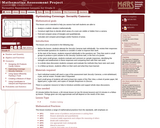
This lesson unit is intended to help sixth grade teachers assess how well students are able to: Analyze a realistic situation mathematically; construct sight lines to decide which areas of a room are visible or hidden from a camera; find and compare areas of triangles and quadrilaterals; and calculate and compare percentages and/or fractions of areas.
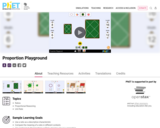
Sample Learning Goals
Use a ratio as a descriptive characteristic
Compare the meaning of a ratio in different contexts
Use scaling to build proportions or find a missing value in a proportion
Simplify ratios to build proportions or find a missing value in a proportion
Use multiplicative reasoning to solve problems

In this video, Ratey the Math Cat, points out the rates and proportions in daily life.

For this activity, students identify the ratios.

Students identify equal ratios in this interactive game.
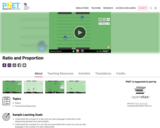
Sample Learning Goals
Understand the concept of a ratio and use ratio language to describe a ratio relationship between two hand heights.
Understand the concept of a unit rate a/b associated with a ratio a:b, and use rate language in the context of a ratio relationship.
Recognize and represent proportional relationships between hand heights.

This is an activity that I like to title, "Making a worksheet More than a worksheet". Teachers should cut the fourteen questions out, place them in a ziploc bag. Each group will get a bag of questions and place their answers on the answer sheet.
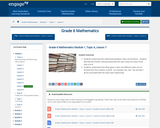
In this lesson, students understand the relationship between ratios and fractions. Students describe the fraction A/B associated with the ratio A:B as the value of the ratio A to B. Students understand that when given a ratio A:B, different ratios can be formed from the numbers A and B. For example, B:A, A: (A + B), and B: (A + B) are associated with the same ratio relationship.

In this activity, students use chocolate candies to create pie graphs that show their understanding of the composition of air. They discuss why knowing this information is important to engineers and how engineers use this information to improve technology to better care for our planet.

Students will be using unit rates of gas to see how it influences grocery prices. Students will have 2 days to create their own product to share with the class. This lesson was developed by Jodie Hott as part of their completion of the North Carolina Global Educator Digital Badge program. This lesson plan has been vetted at the local and state level for standards alignment, Global Education focus, and content accuracy.

This course was created by the Rethink Education Content Development Team in partnership with the North Carolina Virtual Public Schools. This course is aligned to the NC Standards for 6th Grade Math.

This course was created by the Rethink Education Content Development Team in partnership with the North Carolina Virtual Public Schools. This course is aligned to the NC Standards for 6th Grade Math.

This course was created by the Rethink Education Content Development Team in partnership with the North Carolina Virtual Public Schools. This course is aligned to the NC Standards for 6th Grade Math.

This lesson unit is intended to help you assess how well students are able to solve a real-world modeling problem. There are several correct approaches to the problem, including some that involve proportional relationships.
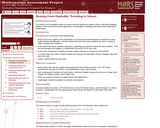
This lesson unit is intended to help teachers assess how well students are able to solve a real-world modeling problem. There are several correct approaches to the problem, including some that involve proportional relationships.